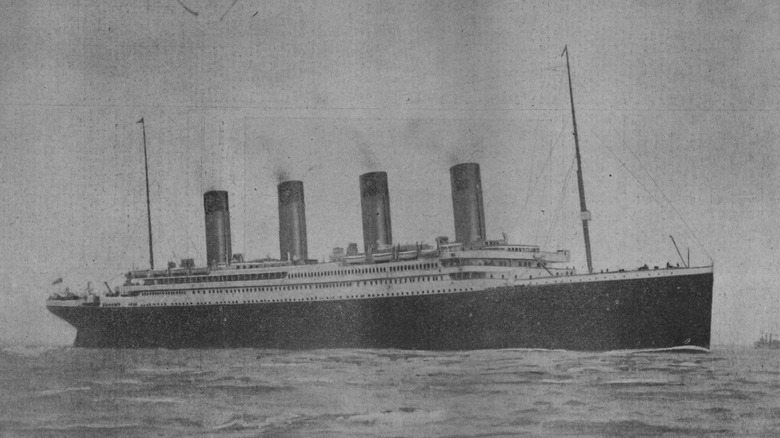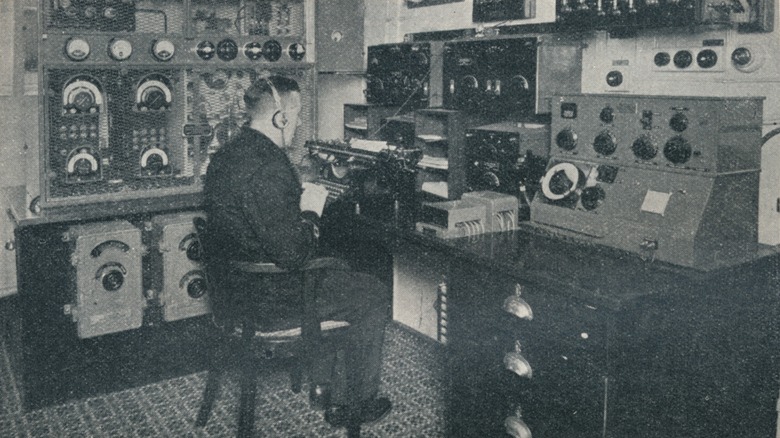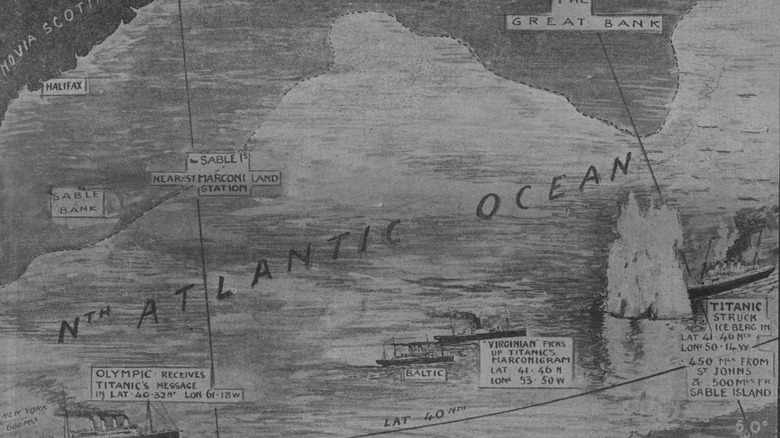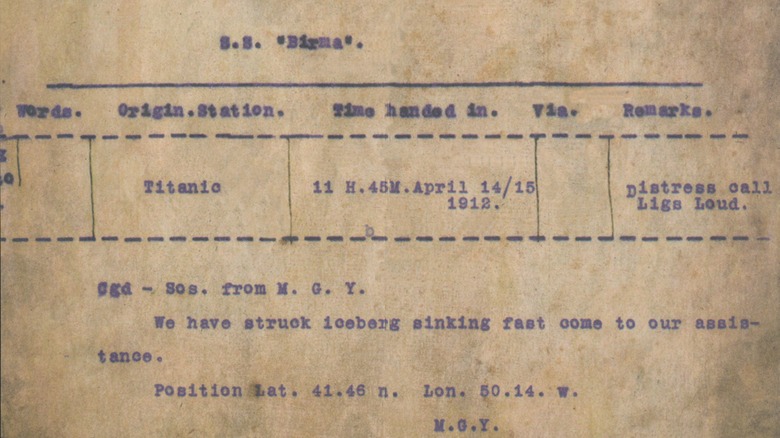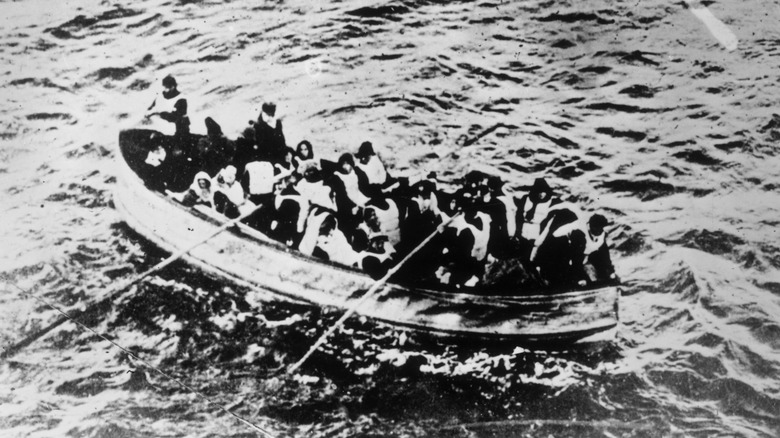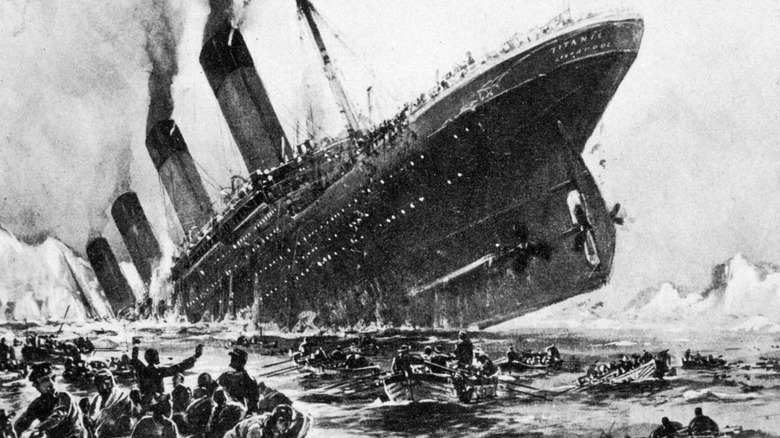These Final Titanic Messages Are Even More Bone-Chilling Now
When RMS Titanic set out on its maiden voyage across the Atlantic on April 10, 1912, it was equipped with a wireless telegraph service, allowing ships and lighthouses to communicate through Morse code. It was developed by Guglielmo Marconi, who established the Wireless Telegraph and Signal Co. in 1897. However, wireless communication was relatively new and there was no standard protocol for sending emergency messages. Despite that, technology may have been the sole reason that anyone survived the disaster, according to Science Museum. During the daytime, it was estimated that messages could travel up to 300 miles, but after dark, this distance increased dramatically.
The Marconi Co. hired operators to work on ships like Titanic. The two men tasked with delivering messages for Titanic were John Phillips and Harold Bride (the latter of whom actually survived the ordeal). While one man slept, the other handled incoming and outgoing messages, History Collection reports. The station that handled these messages was located at Cape Race, located in southern Newfoundland.
Passengers sent lots of messages before the collision
Passengers kept Phillips and Bride busy with plenty of benign messages to their friends and family. While the messages Titanic sent on that fateful night do not tell a complete story, they recount the tragedy unfolding in real-time. One of the most significant revelations is that the first warnings of an iceberg were not heeded. Those initial messages were sent by the ship Mesaba at 9:40 p.m., notifying Titanic that nearby waters had (per Britannica) "heavy pack ice and [a] great number [of] large icebergs." Phillips never relayed the message, and to this day, no one knows why.
Britannica states that at 10:55 p.m., the ship Californian messaged Titanic stating that it was "stopped and surrounded by ice." Phillips reportedly replied, "Shut up! Shut up! I am busy. I am working Cape Race." It is thought that he was so busy trying to keep up with the influx of messages that he didn't take time to read what operators stationed on other ships were telling him, History Collection reports.
Not everyone knew Titanic hit an iceberg
Titanic struck an iceberg at 11:40 p.m. on April 14. One of the most interesting aspects of the incident is that many passengers weren't even aware that the ship came into contact with anything. One reason is because some people were already asleep. However, History reports that survivors who were awake at the time stated that the collision felt like nothing more than a vibration.
Sometime around midnight on April 15, Captain Edward Smith told Phillips and Bride that the ship hit an iceberg. Bride's account of the incident was that the two operators found it hard to believe that the situation was serious because they barely felt anything. Smith told them to prepare to send distress messages, and about ten minutes later, he ordered them to send the first call for help, "CQD. CQD. Titanic to all ships," according to History Collection. CQG was the official distress signal for the Marconi Co.
Panic ensued as water filled Titanic
From there, Phillips began to hastily send out more messages. BBC News reports that one message to Carpathia read, "Come at once. We have struck a berg. It's a CQD, old man." Another communication to Frankfurt included Titanic's coordinates and the fact that the ship was already sinking. Other ships in the Atlantic that were able to pick up Titanic's calls included its sister ship, Olympic, as well as Celtic, Caronia, Asian, and Virginian. However, many of these ships' operators remained in disbelief that Titanic was actually under the duress it was suffering.
As the ship filled with water, Phillips and Bride did not leave their post. By 12:15 a.m., crew members began preparing the lifeboats. Over the next 90 minutes, the ship sent a flurry of distress calls naming their coordinates. At 12:32 a.m., Carpathia messaged Titanic and said it was headed toward the sinking ship.
People were put into lifeboats
Unaware that Carpathia was on its way, Phillips and Bride continued to send distress calls. Bride suggested to Phillips that he should try sending out a new distress signal — an SOS. "Send SOS. It's the new call, and it may be your last chance to send it," he said, reports Science Museum. At 12:40 a.m., Titanic did send an SOS call, explaining again that they were "sinking by the head."
Up until 1:10 a.m., Titanic continued to call out its coordinates, repeating that it had struck an iceberg and needed help. At 1:27 a.m., Titanic transmitted to Olympic (per The Titanic Inquiry Project): "We are putting the women off in the boats." Three minutes later, another message read that they "can not last much longer." A distress call was sent at 1:45 a.m. explaining that the engine room was flooded up to the boilers.
'We are sinking fast'
One of the last messages Phillips sent was to Frankfurt, and it read (per The Atlantic), "You are a fool, stdbi – stdbi – stdbi and keep out." According to testimony later given by Bride after he returned home, Phillips wanted Frankfurt to stop communicating with Titanic because its messages interfered with the incoming calls from Carpathia.
At 2:00 a.m., Virginia received a call from Titanic, but it was faint and undetectable, and 17 minutes later, it received a distress call that ended suddenly. The Atlantic reports that at this time, the telegraph room lost power, and water was heard flooding the wheelhouse. The final distress call from Titanic was picked up by Carpathia between 2:15 and 2:25 a.m., and it included, "We are sinking fast. Passengers are being put into boats. Titanic," per The Atlantic.
Phillips died in the immediate aftermath of the sinking. One survivor recalled Phillips' death (via The National Archives (U.K.)): "[He] suddenly slipped down in the water, and though we held his head up, he never recovered. I insisted on taking him into the lifeboat with us, hoping there still might be life, but it was too late." Bride survived the sinking, dying in 1956.
